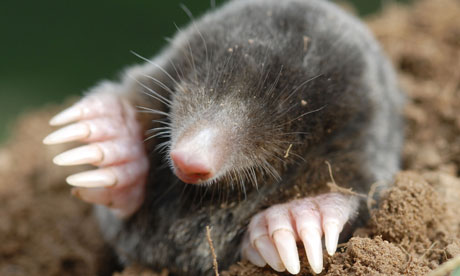English Heritage keeps a careful watch as volunteers sift through hundreds of
molehills on a fortress site near the Roman wall

Eheu! Talpa sum! Atque aquilam legionis XI Hispana reperi...
Photograph: David Cole/Alamy
Archaeologists find it hard agree about the relative merits of excavating the
ancient past or leaving it undisturbed until we have the resources and
technology to preserve its remains indefinitely above ground.
It can work both ways. If it wasn't for the enterprising Birley family at Vindolanda, we would not have the extraordinary writing tablets with details of the first and 2nd century AD social engagements of garrison wives and the like. Equally, the mosaic at Woodchester in Gloucestershire remains in a very fine state because it is so relatively seldom put on show.
Nothing of this debate is known, however, to the most famous of the creatures which live amidst all the underground treasure: the UK's moles. And they are in the northern news because they have been doing some excavation of their own.
It can work both ways. If it wasn't for the enterprising Birley family at Vindolanda, we would not have the extraordinary writing tablets with details of the first and 2nd century AD social engagements of garrison wives and the like. Equally, the mosaic at Woodchester in Gloucestershire remains in a very fine state because it is so relatively seldom put on show.
Nothing of this debate is known, however, to the most famous of the creatures which live amidst all the underground treasure: the UK's moles. And they are in the northern news because they have been doing some excavation of their own.
No comments:
Post a Comment
Note: Only a member of this blog may post a comment.